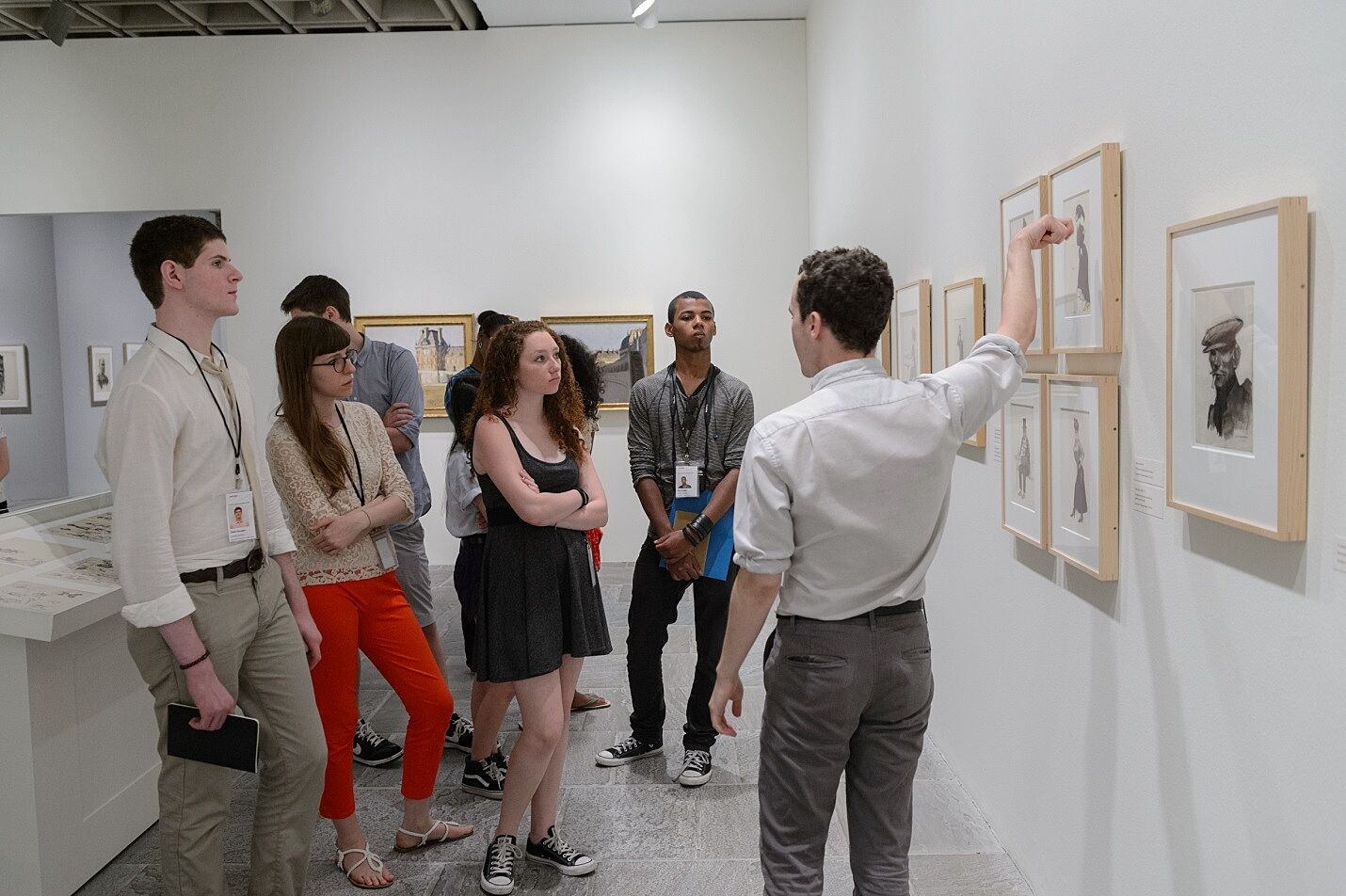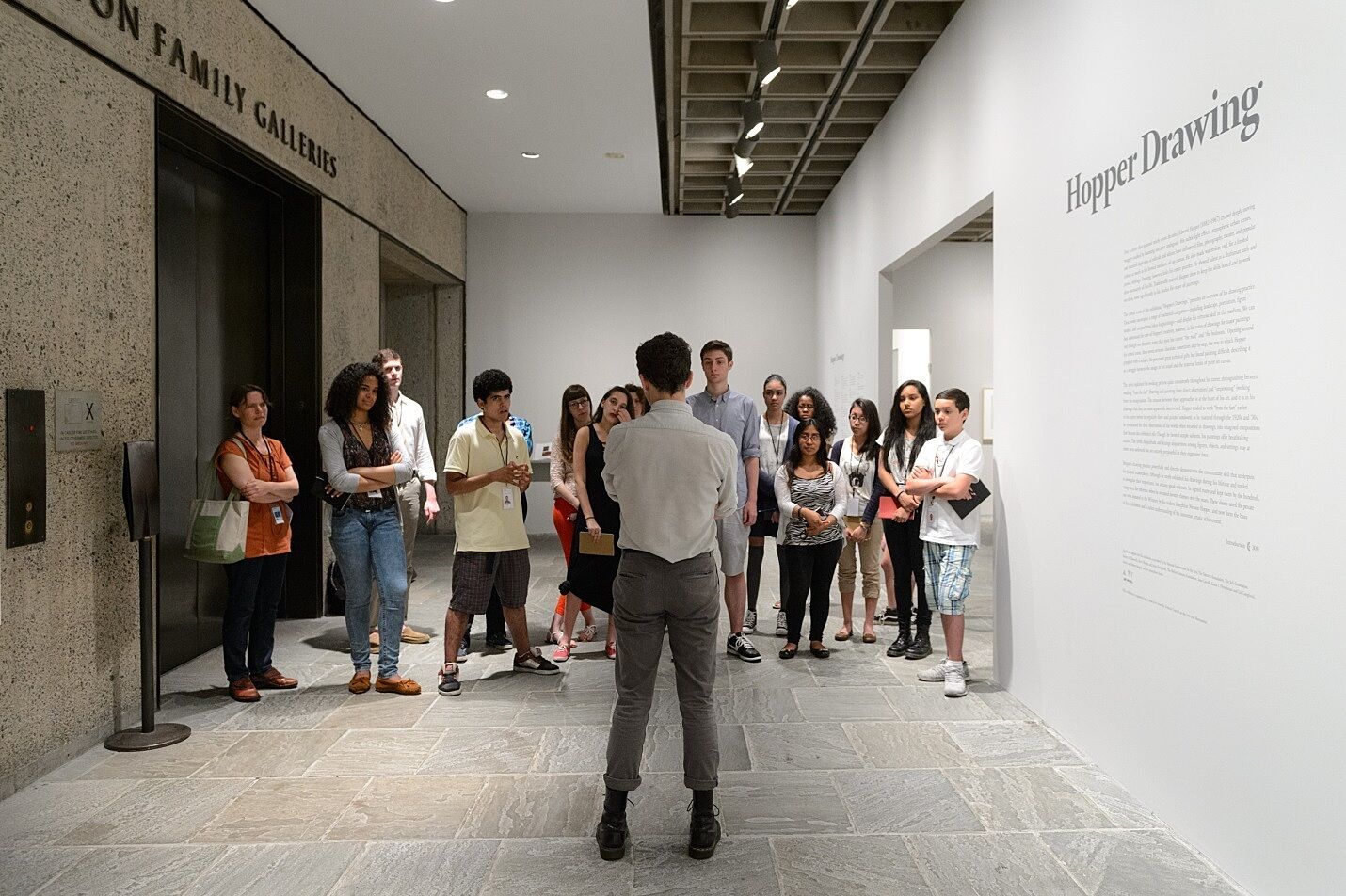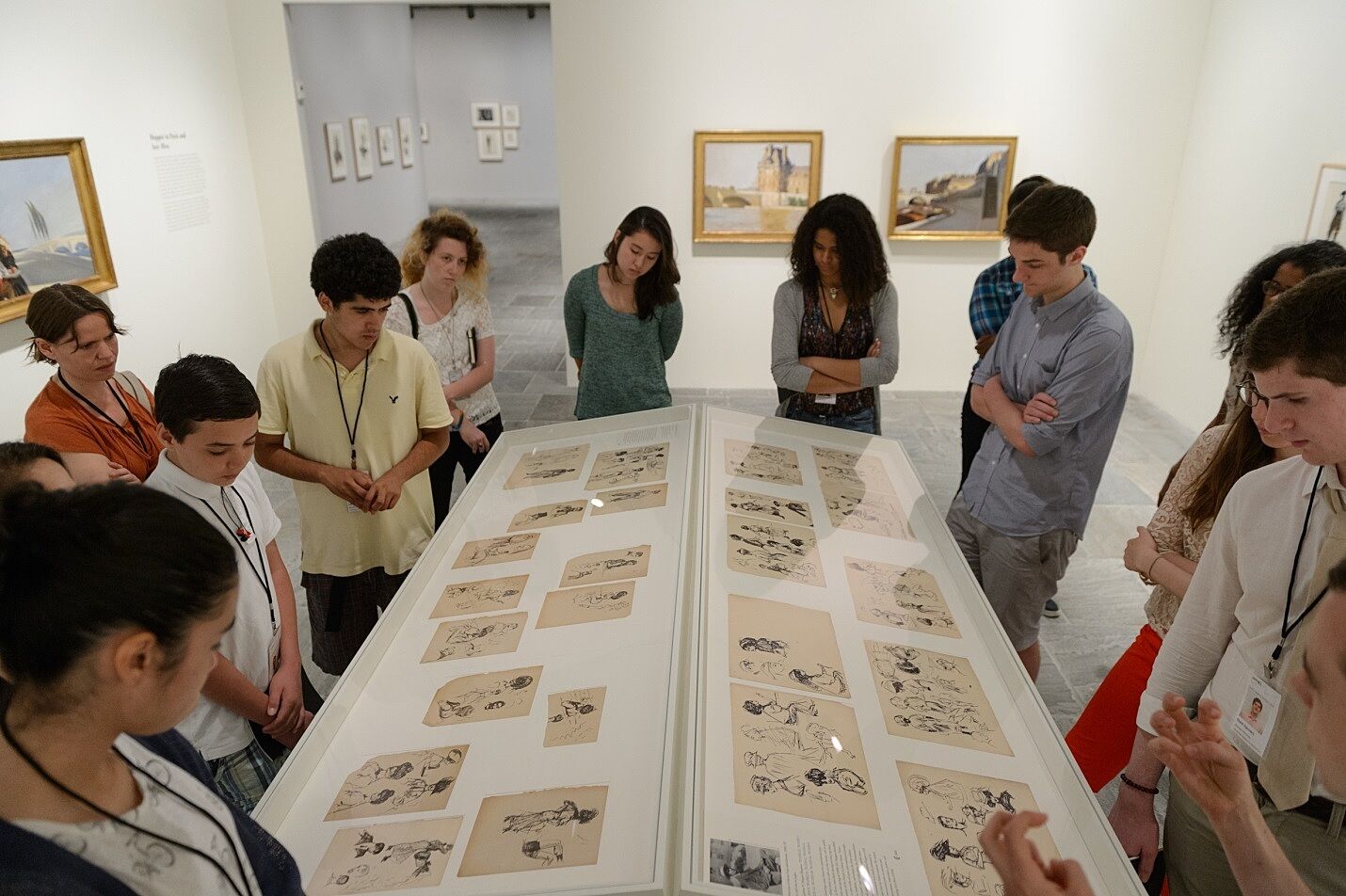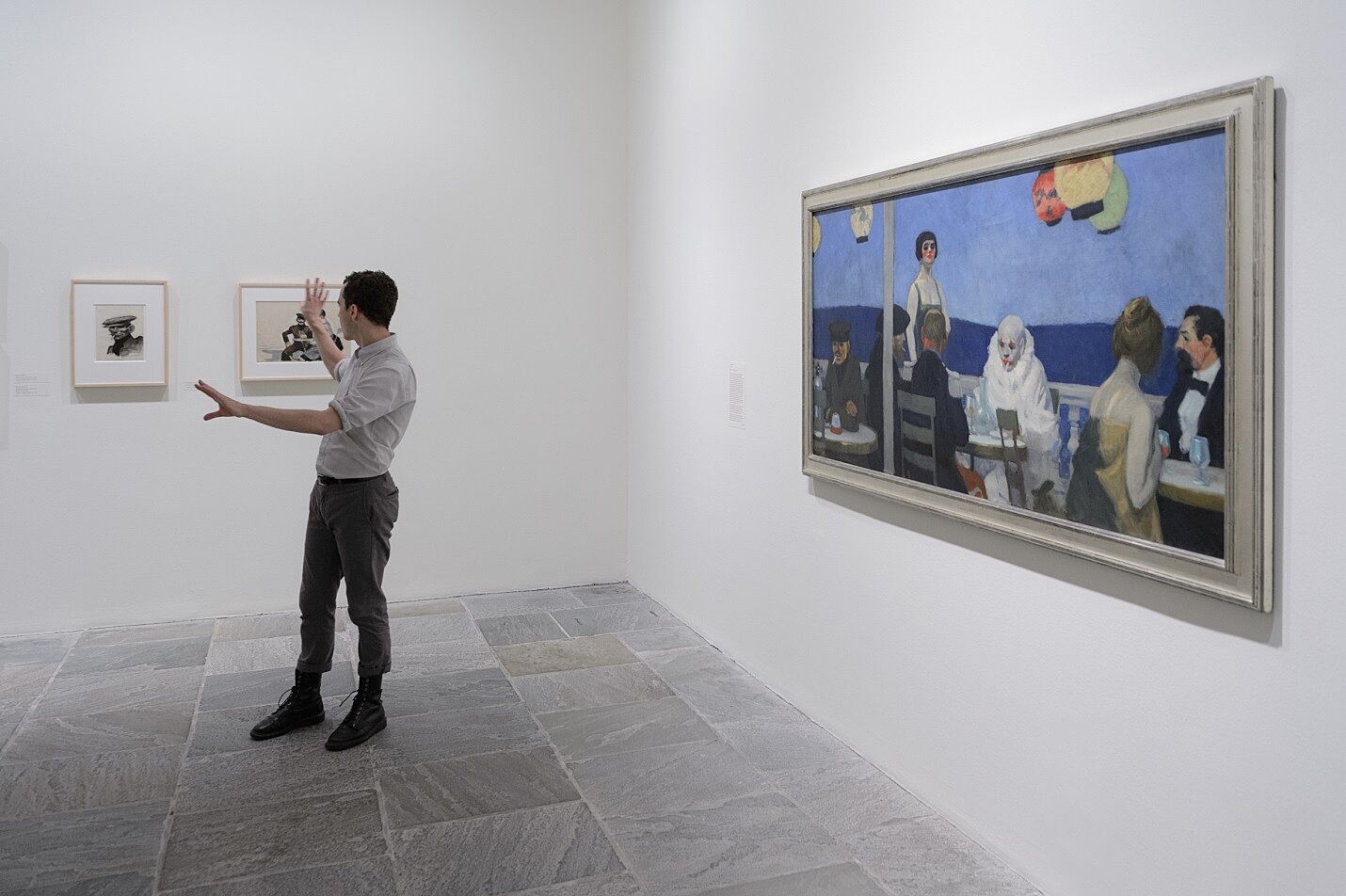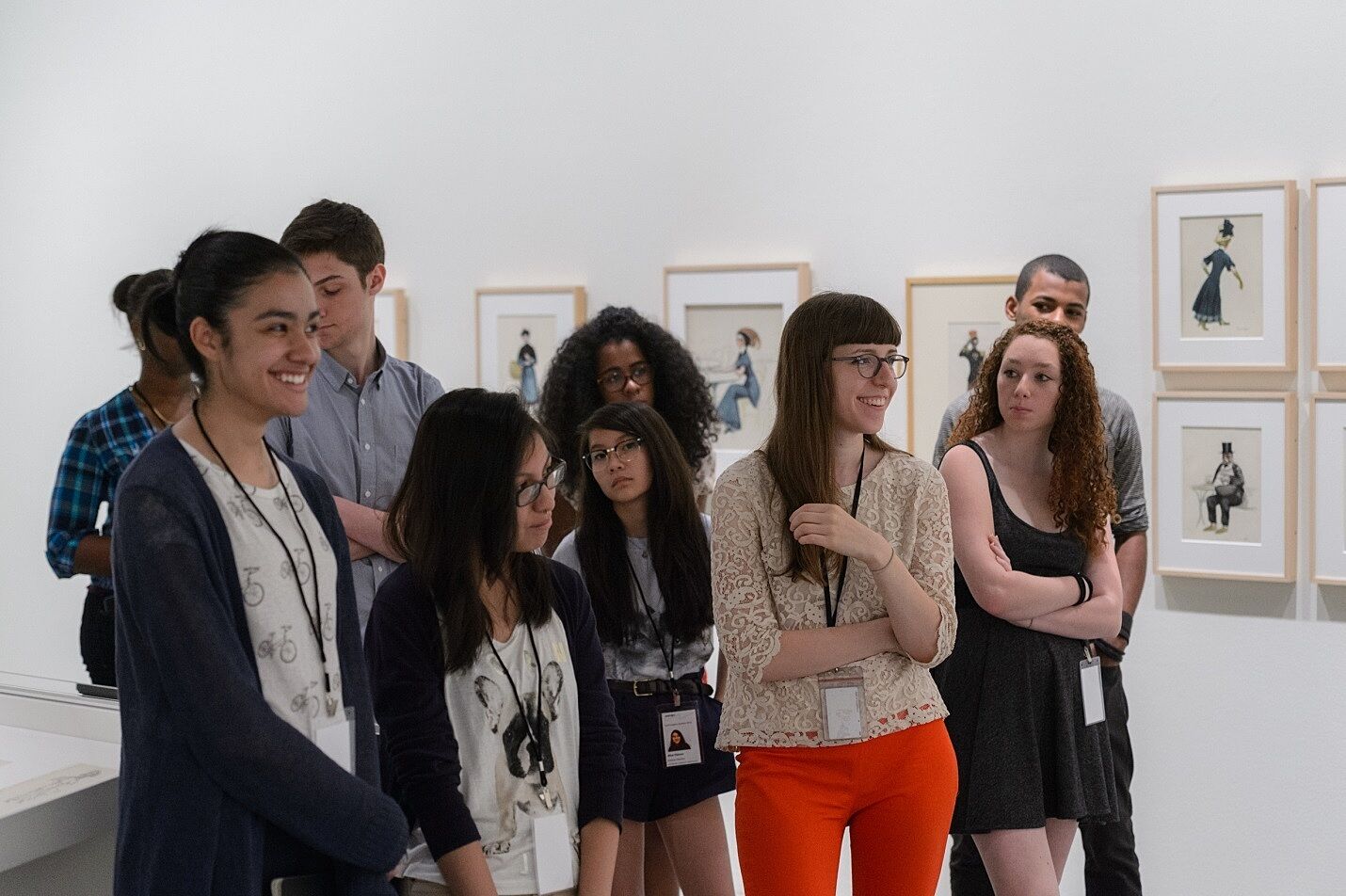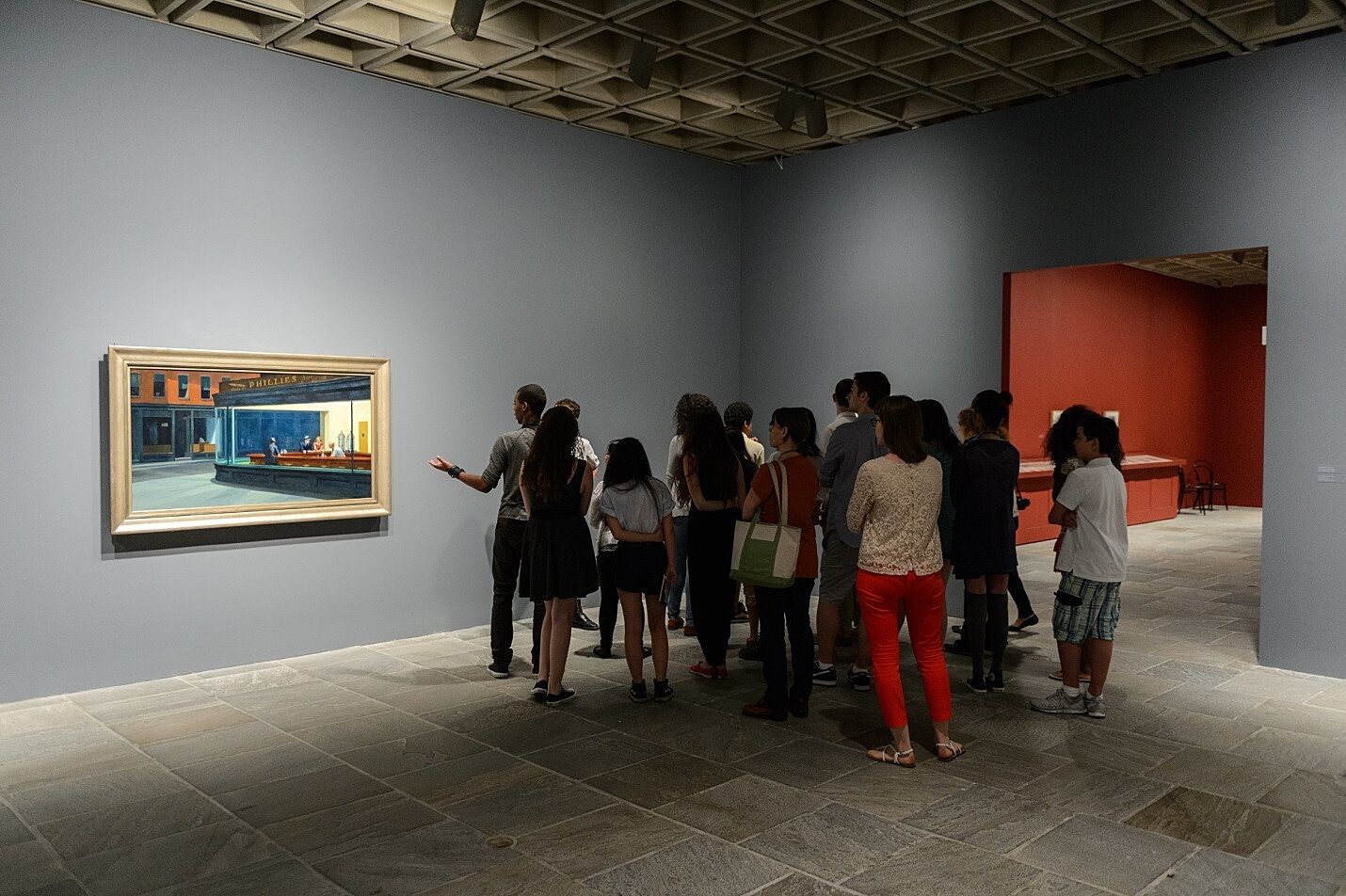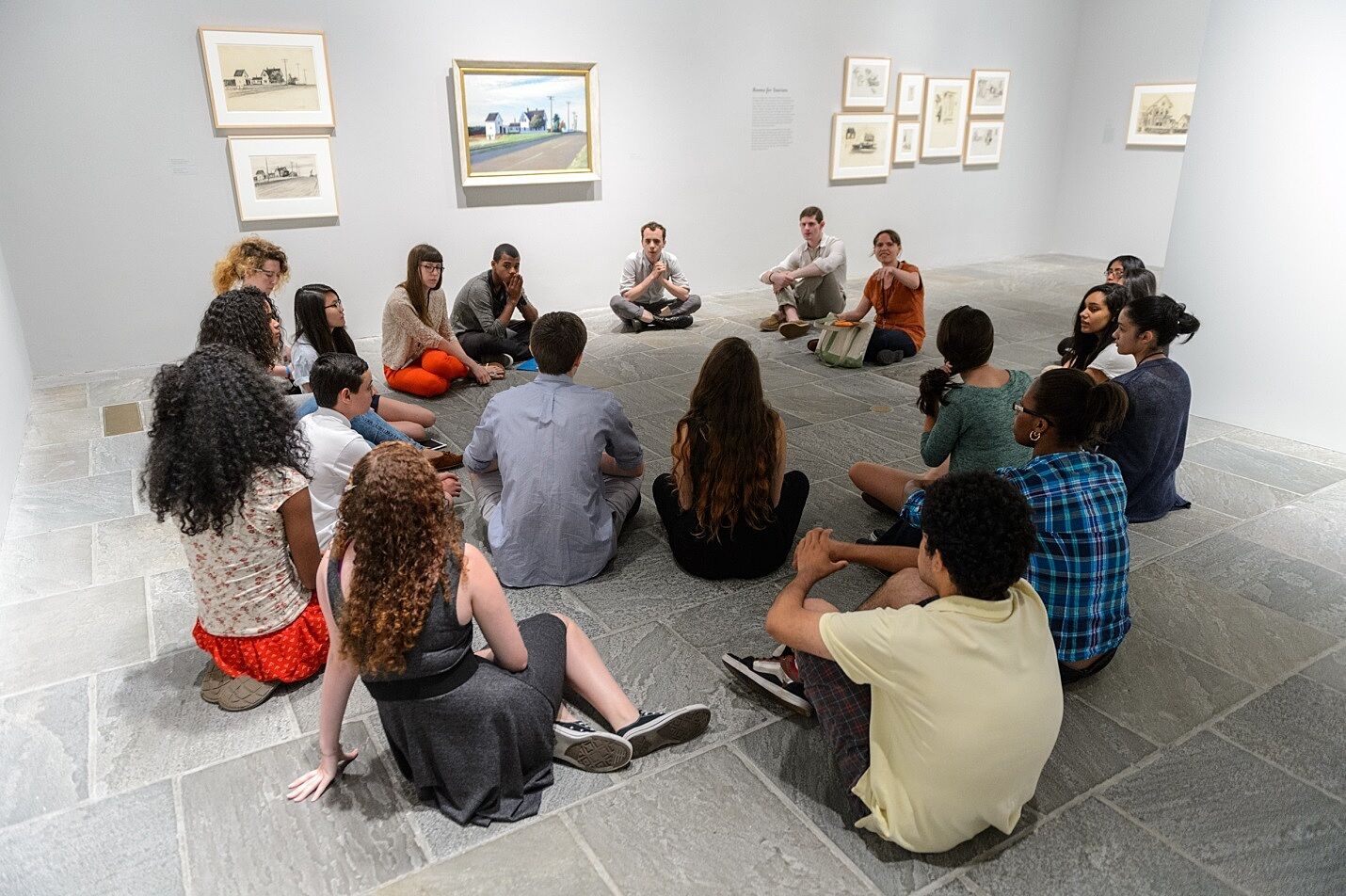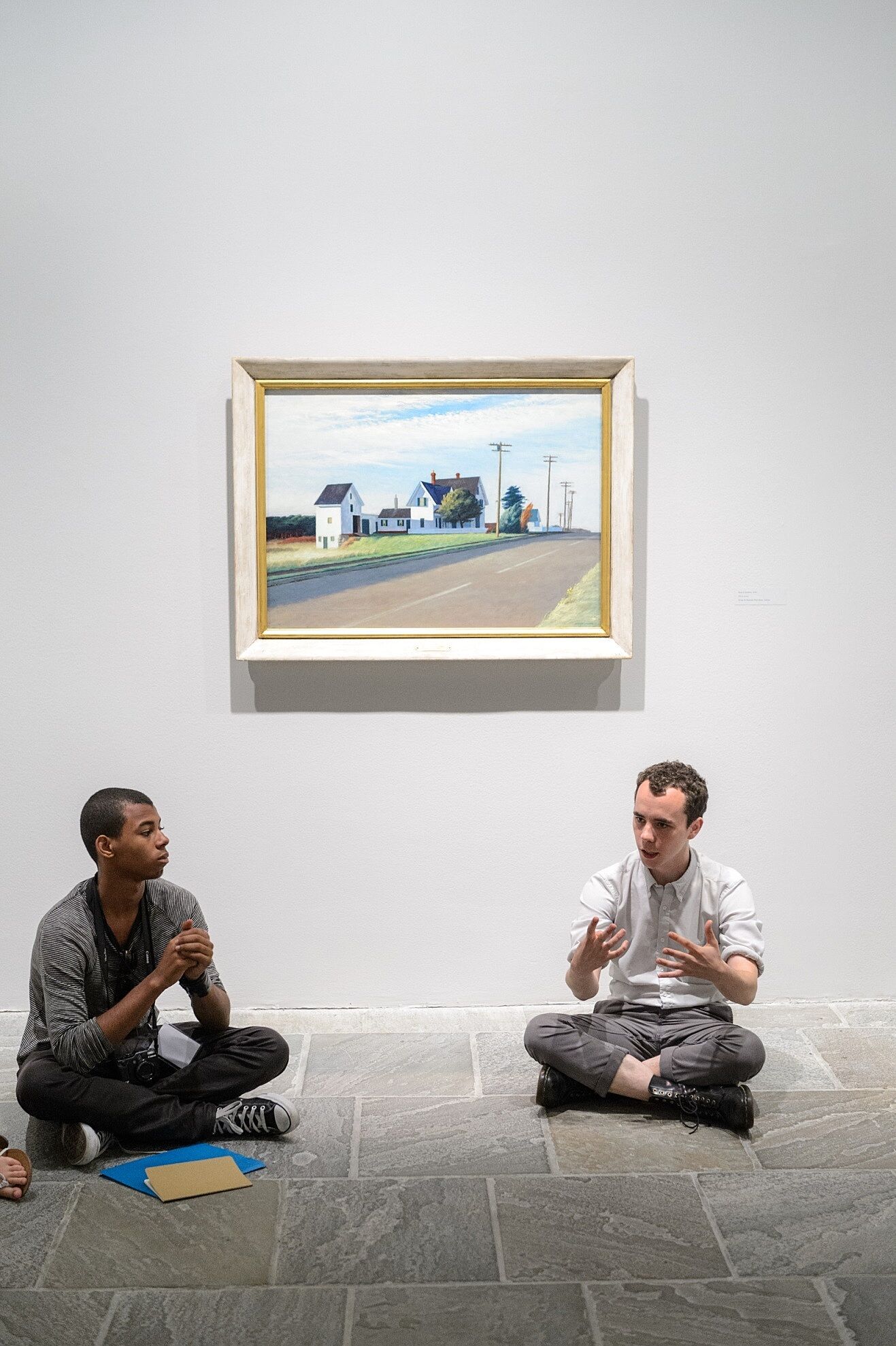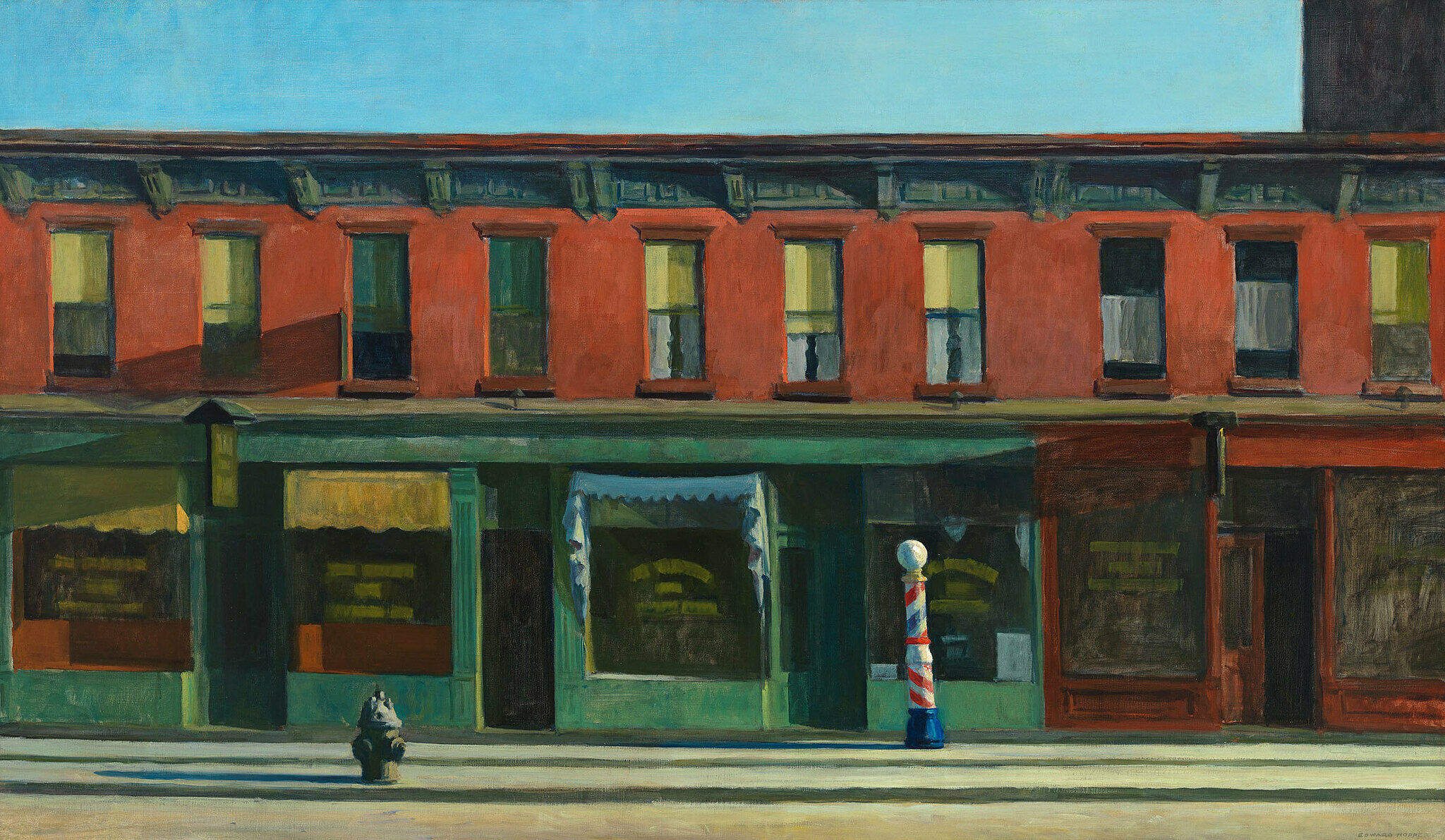YI Explores Hopper Drawing
Jul 2, 2013
On July 2, Youth Insights explored the Hopper Drawing exhibition with curatorial assistant Nicholas Robbins, who worked on the show with Whitney curator Carter Foster. Robbins explained that Hopper Drawing is the first show to incorporate so many of Hopper’s sketches, which he originally did not want people to see. In designing the exhibition, Foster used Hopper’s drawings to reveal his process, exploring how he created some of his most well-known paintings. As Robbins explained to us, Hopper would often make many drawings leading up to a single painting.
Hopper portrayed daily life, often from a spectator's viewpoint. Some of his paintings and sketches are composed as if from afar, or passing by. We learned that Hopper’s inspiration for paintings such as Nighthawks (1942) and Early Sunday Morning (1930) came from the walks he would take in New York City. Even in some parts of the gallery, I started to feel as though I was walking the city streets, merely passing by buildings or noticing other people's clothing, but not paying attention to the details of their faces. Hopper's artwork also suggests themes of isolation and solitude. When he sketched or painted buildings, they usually stood alone, or appeared almost empty. He painted people as though they were complete strangers, never engaging in conversation. His work reflected the time in which he made it. For example, a dark looming shape in the top right corner of Early Sunday Morning represents the skyscrapers that were being built at the time. Interestingly, unlike the rest of the artwork in the gallery, Early Sunday Morning is displayed on a large easel rather than on the wall, making the canvas look larger.
Robbins led a highly informative tour of the show,, and he was kind enough to give us some insight on the process that a curator goes through when choosing works for an exhibition. He explained that the job of a curator is to select the artists and art, sort through and edit everything, research, ask other museums to loan works, meet with exhibition managers, and so much more. For instance, Carter Foster has been working on the Hopper Drawing exhibition for four years. Robbins explained to us that there is no typical day as a curator or curatorial assistant. As a curator, you need to be a good writer and researcher, and you must have a good eye and lots of patience. Out of the many art careers in the world, working in a museum allows Robbins to be close to the works of art and to see them right in front of his eyes.
By Savannah and Anna, Youth Insights Summer participants

